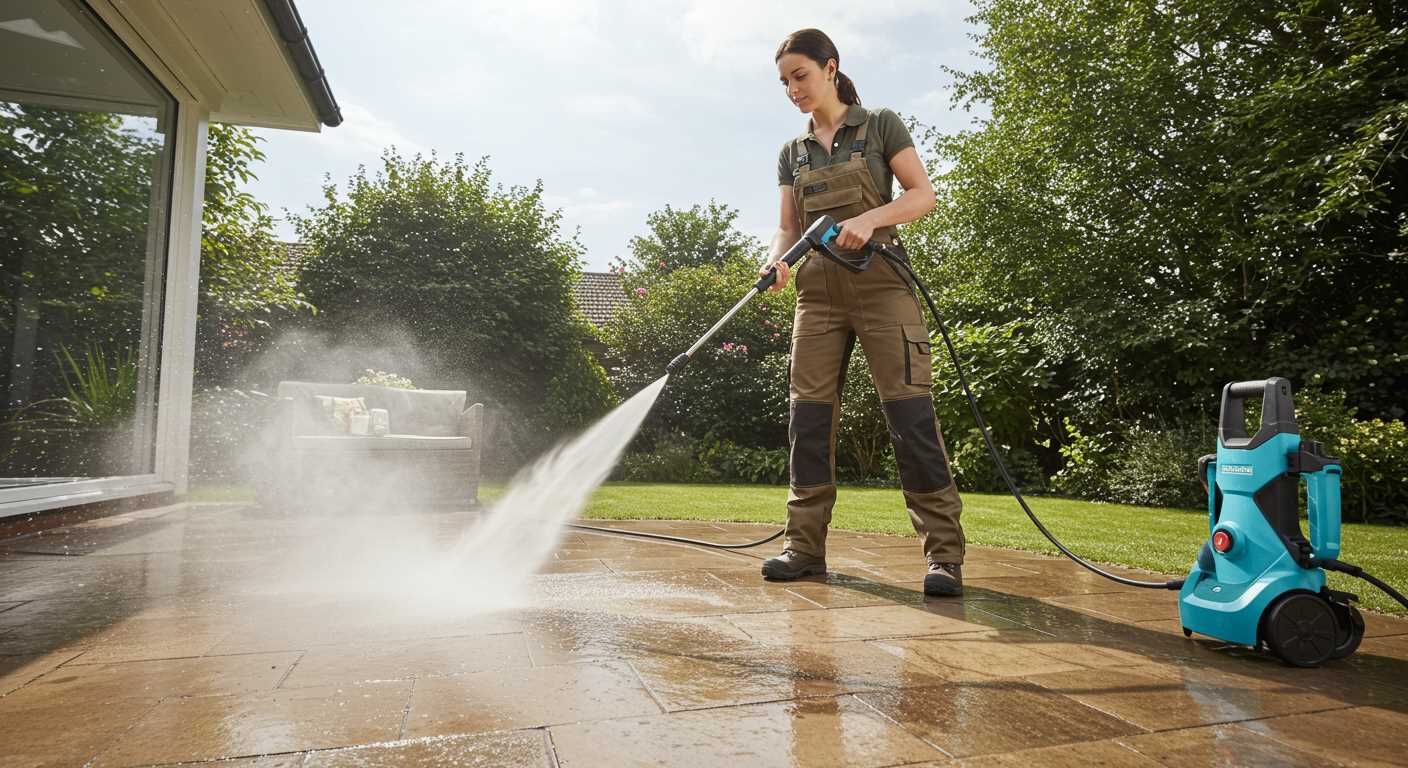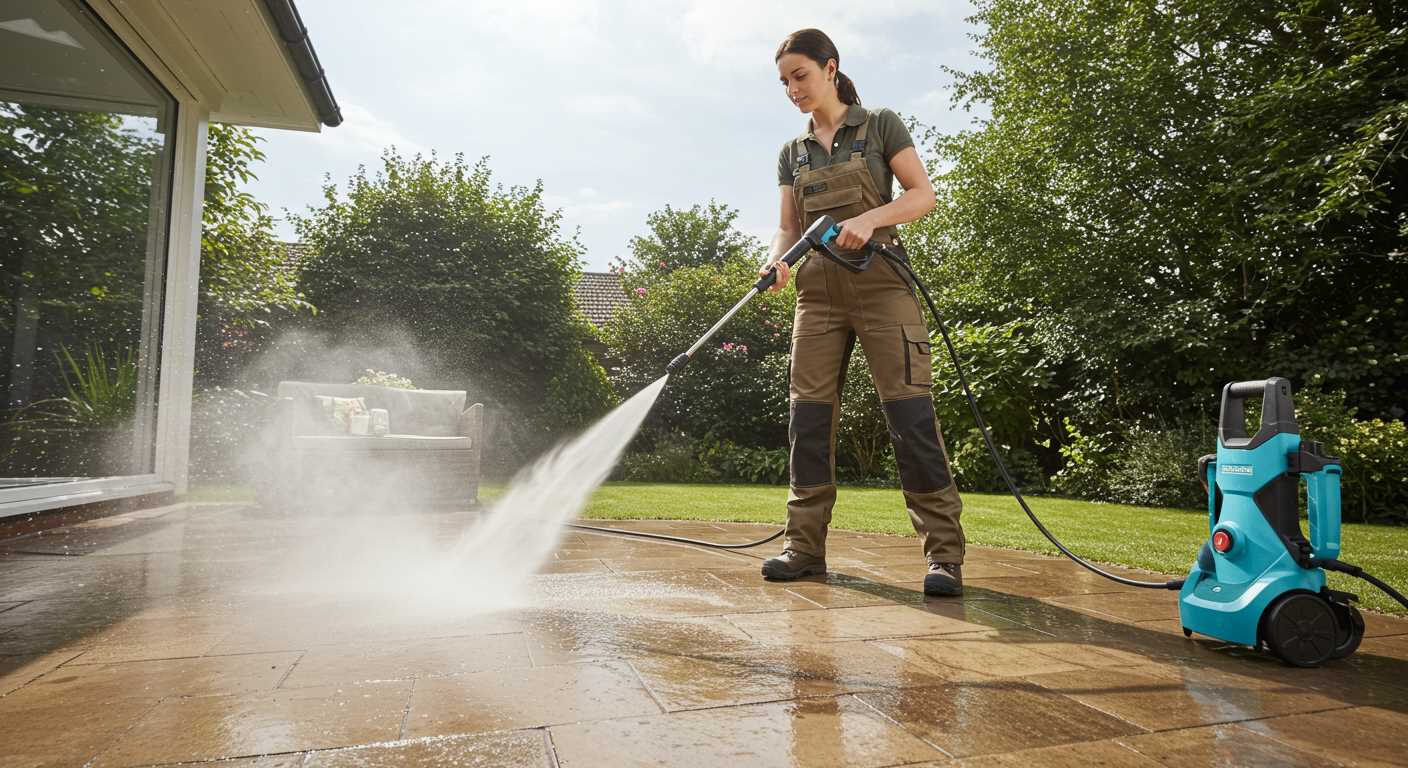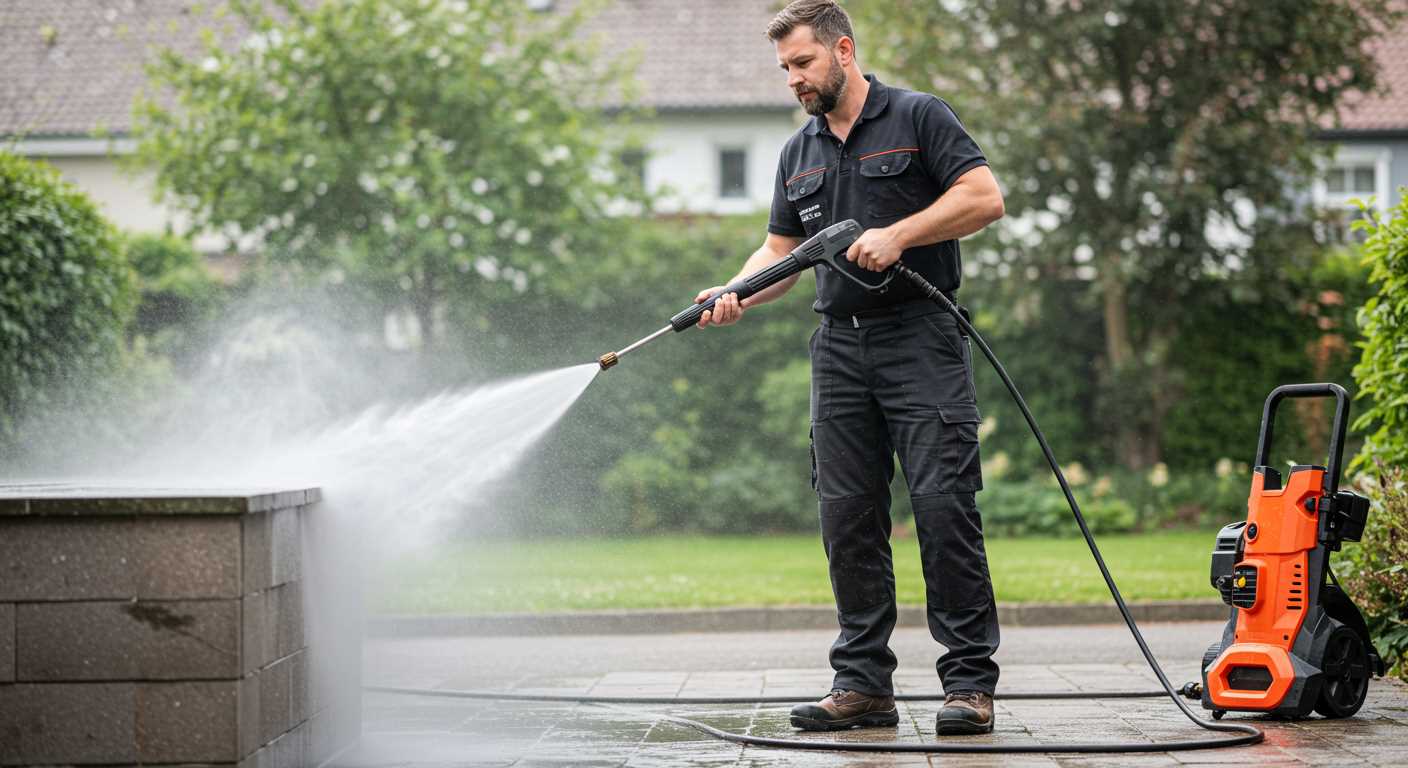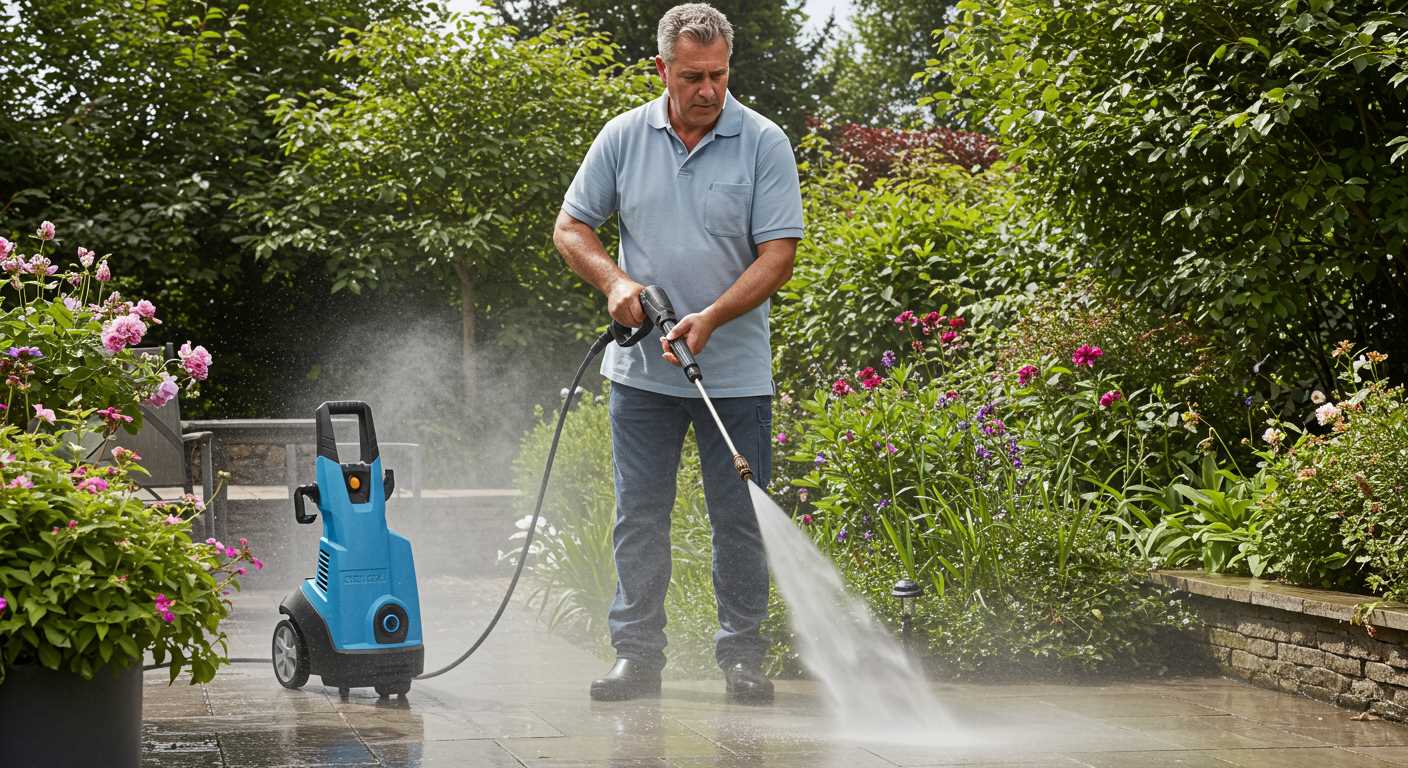




Begin with a mixture of warm water and mild detergent. This combination effectively lifts grime and stains that accumulate over time. I’ve found that a bucket or a large container works best for mixing. Use a broom or a stiff-bristled brush to apply the solution to the surface, scrubbing in circular motions. This not only ensures that the cleaner penetrates the dirt but also helps to dislodge stubborn debris.
For stubborn stains, consider using a paste made from baking soda and water. Apply it directly to the affected areas and let it sit for 15-20 minutes. I remember tackling a particularly tough oil stain this way; patience paid off as the paste worked its magic. Afterward, scrub again with your brush and rinse thoroughly with clean water to reveal a refreshed surface.
Another effective method involves using white vinegar, which acts as a natural disinfectant. Mix equal parts vinegar and water in a spray bottle, then generously spray the mixture onto the surface. Allow it to sit for a few minutes before scrubbing. The acidity of vinegar breaks down grime, making the cleaning process much easier. I’ve used this technique numerous times with fantastic results, especially in areas that see a lot of foot traffic.
Finally, a thorough rinse is crucial. If you have a garden hose, use it to wash away any residual cleaning solution. A clean surface not only looks more appealing but also extends its lifespan. I’ve always believed that a little effort goes a long way in maintaining the beauty of outdoor spaces.
Effective Methods for Maintaining Your Surface
Begin with a thorough sweeping to remove loose debris, dirt, and leaves. A broom with stiff bristles works wonders, ensuring you get into the nooks and crannies where grime tends to accumulate.
Next, prepare a solution using warm water mixed with a few drops of dish soap or a mild detergent. Using a large bucket, fill it with the mixture and grab a stiff-bristled brush. Dip the brush into the soapy water and start scrubbing the surface in sections. Work in small areas to ensure you don’t miss spots.
For stubborn stains, create a paste from baking soda and water. Apply the paste to the blemish and let it sit for 15 to 30 minutes. Return with your brush, scrubbing gently yet firmly until the stain lifts. Rinse thoroughly with clean water to remove any residue.
For organic growth like moss or algae, vinegar or a diluted bleach solution can be effective. Apply the solution directly to the affected area, allowing it to sit for several minutes. This helps break down the growth. Afterward, scrub and rinse well.
To maintain the appearance and longevity of your surface, consider sealing it once you’ve completed the cleaning. A good sealant can protect against future staining and wear. Apply it with a roller or sprayer, following the manufacturer’s instructions for the best results.
Regular upkeep is key. A monthly sweep and occasional wash will keep your area looking its best, preventing the buildup of dirt and grime. Just remember, consistency is more effective than waiting for things to get too grimy before tackling the job.
Choosing the Right Cleaning Solution for Concrete
The choice of the right cleaning agent can significantly impact the results of your maintenance efforts. For stubborn stains, I often recommend a mixture of water and vinegar. This combination effectively tackles organic stains such as mildew or algae. Simply mix one part vinegar with one part water in a bucket and apply it with a stiff brush.
Commercial Solutions
If you prefer a store-bought option, look for products specifically designed for hard surfaces. Many brands offer concrete cleaners that contain enzymes to break down oils and grime. Always follow the manufacturer’s instructions for dilution and application.
| Type of Cleaner | Best For | Application Method |
|---|---|---|
| Vinegar and Water | Organic stains | Scrub with a stiff brush |
| Commercial Concrete Cleaners | Oil and grease | Spray and scrub or rinse |
| Baking Soda Paste | General dirt | Apply paste, scrub, and rinse |
Eco-Friendly Options
Baking soda is another excellent choice. Create a paste by mixing it with water and apply it to the affected areas. Its gentle abrasive properties make it ideal for lifting dirt without damaging the surface. For those concerned about the environment, this is a safe alternative.
For tackling leaves and debris before applying any cleaning solution, consider using the best cordless garden leaf vacuum. This tool can save you time and ensure a clean working area.
Preparing the Area for Cleaning
Clear the space of furniture, plants, and any other items that could obstruct your work. If you have potted plants or decorative elements, move them to a sheltered location to prevent any accidental damage. I remember once overlooking a garden gnome that ended up with a stubborn stain. A simple relocation could have saved me a lot of scrubbing later.
Next, sweep thoroughly to remove loose debris. A broom with stiff bristles works well to dislodge dirt and leaves. I’ve found that using a leaf blower can speed up this process, especially for larger areas. Make sure to collect any debris in a dustpan or bag to keep the space tidy.
Check for any cracks or damage on the surface. Noticing these issues beforehand allows for timely repairs, which can prevent further deterioration. I once missed a small crack and ended up with a bigger problem that required professional intervention. A quick inspection can save you from future headaches.
Consider covering nearby plants or delicate surfaces with tarps or plastic sheeting. This precaution protects them from any cleaning solution drips or splashes. I learned this the hard way when my first attempt left my flowerbeds looking worse than before. A little foresight goes a long way.
If there’s a drain in the vicinity, ensure it’s clear to avoid any backups during the cleaning process. I always check mine, as a clogged drain can turn a simple task into a messy ordeal. Keeping the area dry and ensuring proper drainage can make the entire process smoother.
Finally, gather all your cleaning supplies and tools in one place. Having everything at hand saves time and effort. I often set up a small station with my brushes, buckets, and cleaning agents ready to go. This way, I can focus on the job at hand without unnecessary interruptions.
Using a Broom or Brush to Remove Debris
For a straightforward approach, grab a broom or a stiff-bristled brush to tackle loose particles like leaves, dirt, and grime. This method is effective, especially for regular maintenance, as it prevents build-up and keeps the surfaces tidy.
Choosing the Right Tool
- Broom: A wide broom is suitable for larger areas, allowing you to cover more ground quickly.
- Brush: A stiff-bristled brush works wonders on stubborn spots, such as stains or embedded dirt.
When selecting your tools, consider the surface texture. For smoother finishes, a broom may suffice, while a brush is ideal for textured surfaces that trap debris.
Technique for Effective Sweeping
- Start from one corner and sweep towards the opposite side. This method ensures that debris is pushed outward and collected in a single area.
- Use short, firm strokes for better control, especially when dealing with stubborn dirt.
- Regularly check your progress to ensure you’re not missing any spots.
After collecting debris, dispose of it properly to avoid reintroducing it to the area. For those particularly stubborn stains, consider using a cleaning solution before brushing, as discussed earlier. If you’re ever in need of more powerful options, you might want to explore a Karcher residential pressure washer for future projects.
Applying Cleaning Solution Evenly on the Surface
For optimal results, distribute the cleaning solution uniformly across the entirety of the area. Use a garden sprayer or a bucket with a sponge to apply the mixture. If you opt for a sprayer, adjust the nozzle to a fine mist to ensure an even coat, avoiding puddles that can lead to unsightly marks.
When using a bucket, soak the sponge thoroughly and wring it out slightly before applying to prevent excessive drippage. Start from one corner and work methodically towards the opposite end, ensuring each section receives an adequate amount of the mixture.
Pay attention to the texture of the surface; rough areas may require a bit more solution to penetrate effectively. If you notice any dry spots, go back over them to maintain consistency. Always keep a damp cloth handy for quick clean-ups of any spills.
Allow the solution to sit for the recommended time based on the product instructions. This dwell time ensures that it penetrates deeply into stains or grime, enhancing its effectiveness significantly. Avoid applying during peak sunlight hours to prevent premature drying, which can hinder the cleaning process.
In my experience, taking these steps not only improves the outcome but also saves time in the long run, reducing the need for repeated applications. Proper application sets the foundation for a thorough cleaning, making the subsequent scrubbing easier and more productive.
Scrubbing Techniques for Stubborn Stains
For those persistent marks that refuse to budge, I’ve found that a little elbow grease goes a long way. Start with a stiff-bristled brush; the sturdiness can make a significant difference. Choose one with durable bristles to withstand aggressive scrubbing. A long-handled brush can also save your back while providing leverage for deeper scrubbing.
Mix a solution of warm water and a suitable cleaner, ideally one designed for tough spots. A baking soda paste–just water mixed with baking soda until it reaches a thick consistency–can be surprisingly effective against grease and oil stains. Apply this paste directly onto the stain and let it sit for about 15 to 30 minutes. This allows the solution to penetrate and break down the grime.
Once the paste has set, use your brush to scrub in circular motions. This technique helps lift the stain without damaging the surface. For extra stubborn areas, consider using a scrub pad, but avoid anything too abrasive that could scratch the finish.
After scrubbing, rinse thoroughly with clean water to remove any residue from both the cleaner and the baking soda. A garden hose with a spray nozzle can do the trick. For particularly challenging stains, repeat the application and scrubbing process until you achieve the desired results.
Don’t forget to check the weather before starting. A sunny day can dry out the cleaning solution too quickly, making it less effective. Overcast days are ideal for allowing the solution to work its magic without rushing the process.
For truly stubborn blemishes, consider using a commercial stain remover specifically formulated for your type of surface. Always test any new product in a small, inconspicuous area first to ensure compatibility.
Rinsing and Drying the Concrete Surface Properly
After applying your chosen cleaning solution, it’s vital to rinse the area thoroughly. Start by using a garden hose fitted with a spray nozzle. Adjust the nozzle to a medium spray setting to avoid dislodging any recently cleaned spots. Begin rinsing from one end, moving systematically to the other, ensuring all detergent and dirt are washed away. Focus on corners and edges where grime tends to accumulate.
For those persistent areas where the solution may linger, consider using a stiff-bristled broom to help lift the residue while rinsing. This technique not only enhances the rinsing process but also ensures you don’t leave behind any streaks or spots that could mar the final appearance.
Once you’ve completed rinsing, allow the surface to dry naturally. If you’re working in a shaded area, drying may take longer, so a fan or blower can speed up the process. If the sun is out, the heat will assist in evaporating the water, but keep an eye on it to avoid water spots forming from the quick evaporation of puddles.
For optimal results, avoid walking on the surface until it’s completely dry. This prevents any imprinting or contamination from shoes, which might introduce new dirt or oils. If necessary, plan your cleaning when the weather forecast predicts dry conditions for the next few days, ensuring a thorough and effective finish.




.jpg)


